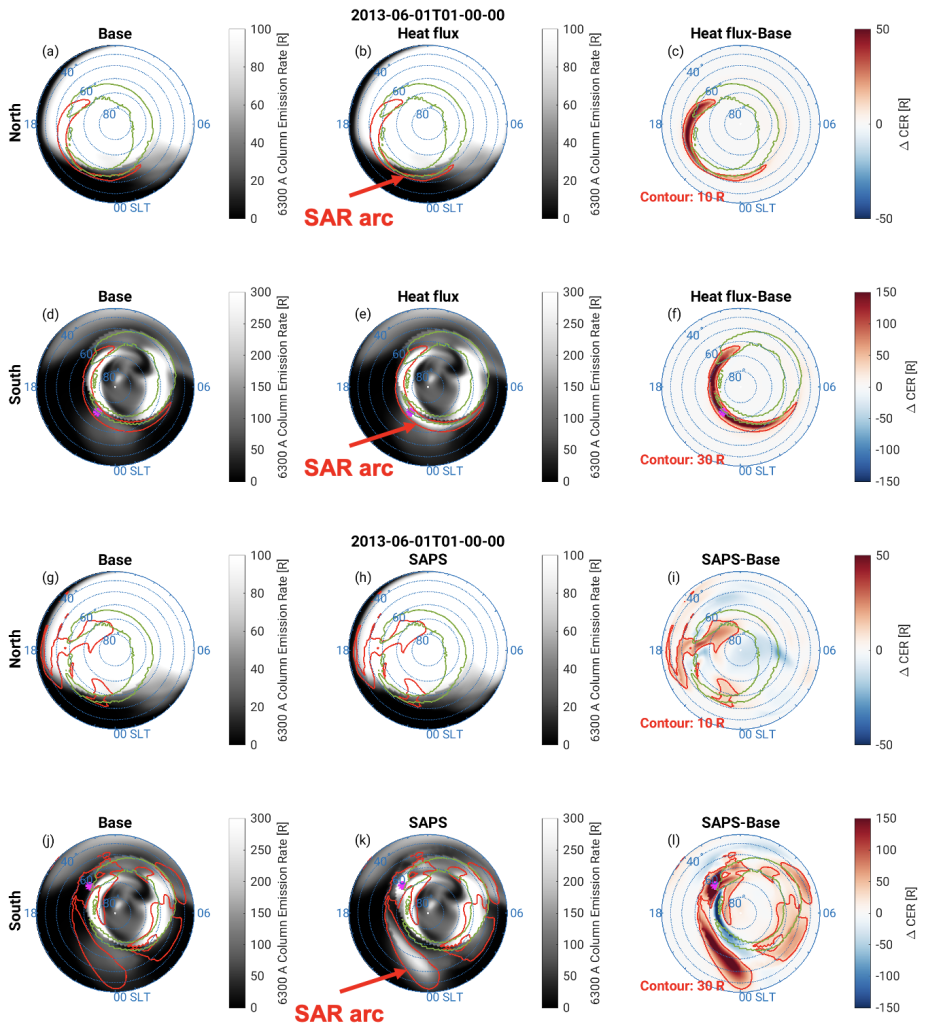
Heat flux/SAPS impacts on SAR arcs. (a-c) 6300 A column emission rates in the baseline TIEGCM run, CIMI heat flux driven TIEGCM run, and their difference in the northern hemisphere. (d-f) Same format for the southern hemisphere. (g-l) Same format for the comparison between with and without SAPS.
Geophysical Research Letters: The Earth's topside atmosphere is subject to energy inputs from the magnetosphere and solar wind. In addition to the Joule heating generated by high latitude plasma convection and energy flux carried by precipitating magnetospheric particles, magnetospheric energy can be also deposited in the ionosphere-thermosphere via heat flux, i.e., energy flows carried by low-energy thermal electrons. When hot ions in the ring current collide with the cold plasma in the plasmasphere, heat conduction occurs and the resultant heat flux is transported along geomagnetic field lines to the footprint ionosphere. The additional heating raises the electron temperature in the subauroral ionosphere and modifies the ionosphere-thermosphere states. This study uses first-principles inner magnetosphere model and ionosphere-thermosphere model to illustrate the thermodynamic coupling effects between the topside ionosphere and the magnetosphere, and compare the relative significance between the heat flux and plasma convection due to electrodynamic coupling. The numerical experiments show that the heat flux primarily increases electron temperature while subauroral plasma flow heats up both plasma and neutrals. Despite different physical mechanisms, the heat flux and subauroral plasma convection make comparable contributions to red line emission rates in the subauroral region.